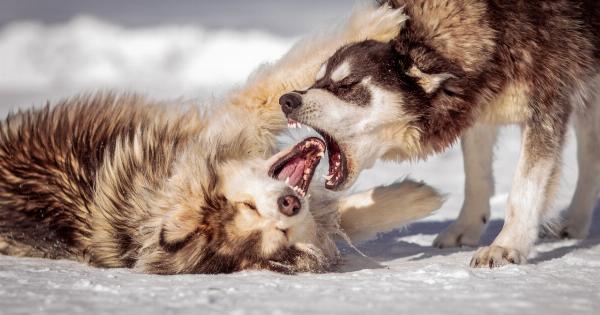Dogs are known for their loyal and loving nature, but there may be instances when a dog becomes suddenly aggressive.
Understanding the reasons behind this aggression is crucial in order to address the issue and ensure the safety of both the dog and the people around it. This article will explore some of the common causes of sudden aggression in dogs and provide insights into how to manage and prevent such behavior.
1. Fear and Anxiety
One of the primary reasons for sudden aggression in dogs can be fear and anxiety. Dogs may display aggressive behavior when they feel threatened or scared.
This can happen due to various factors such as previous traumatic experiences, unfamiliar environments, or specific triggers that evoke fear.
2. Resource Guarding
Resource guarding occurs when a dog becomes aggressive while protecting its valued possessions, such as food, toys, or even its bed.
Dogs can perceive anyone approaching these resources as a potential threat, leading them to exhibit sudden aggression to protect what they consider their own.
3. Pain or Discomfort
Dogs may become aggressive when they are experiencing pain or discomfort. This could result from an underlying medical condition or an injury. When dogs are in pain, they may act aggressively as a defensive mechanism to prevent further discomfort.
4. Lack of Socialization
Proper socialization plays a crucial role in shaping a dog’s behavior.
Dogs that have not been adequately exposed to different people, animals, and environments during their critical developmental stages may exhibit sudden aggression when faced with unfamiliar situations or encounters.
5. Protective Instincts
Dogs are known for their protective instincts towards their owners or their territory.
In some cases, dogs may display sudden aggression when they perceive a potential threat to their loved ones or their perceived territory, such as the home or their immediate surroundings.
6. Frustration and Agitation
Similar to humans, dogs can also experience frustration and agitation. When dogs are unable to fulfill their needs or desires, they may become irritable and display sudden aggressive behavior.
This frustration can stem from a lack of physical exercise, mental stimulation, or inadequate training.
7. Hormonal Changes and Medical Conditions
Hormonal changes, such as those occurring during puberty or when females are in heat, can significantly impact a dog’s behavior and temperament.
Additionally, certain medical conditions like hypothyroidism or brain tumors can also contribute to sudden aggression in dogs.
8. Lack of Training and Boundaries
Without proper training and clear boundaries, dogs may not understand acceptable behavior. A lack of consistency in enforcing rules can confuse the dog and lead to sudden aggressive reactions.
Dogs thrive on structure and guidance, and without it, they may resort to aggressive behavior.
9. Traumatic Experiences
Past traumatic experiences, such as abuse, neglect, or being involved in dogfights, can have a lasting impact on a dog’s behavior.
These experiences may trigger sudden aggression as a defense mechanism or due to fear memories associated with the past trauma.
10. Genetic Predisposition
Sometimes, a dog’s genetic makeup can contribute to sudden aggression. Certain breeds have been selectively bred for traits that may make them more prone to aggression.
However, it is important to note that genetics alone do not determine a dog’s behavior, and responsible breeding and proper training can mitigate any potential issues.
Understanding the reasons behind a dog’s sudden aggression is an essential step toward addressing and managing this behavior.
It is important to consult with a professional dog trainer, behaviorist, or veterinarian who can provide personalized guidance and support based on the specific circumstances of your dog.
Remember, aggression in dogs should be taken seriously as it can pose a risk to the safety of both humans and other animals.
With patience, understanding, and professional help, it is possible to address the underlying causes of aggression and work towards a happier and well-behaved furry companion.


























